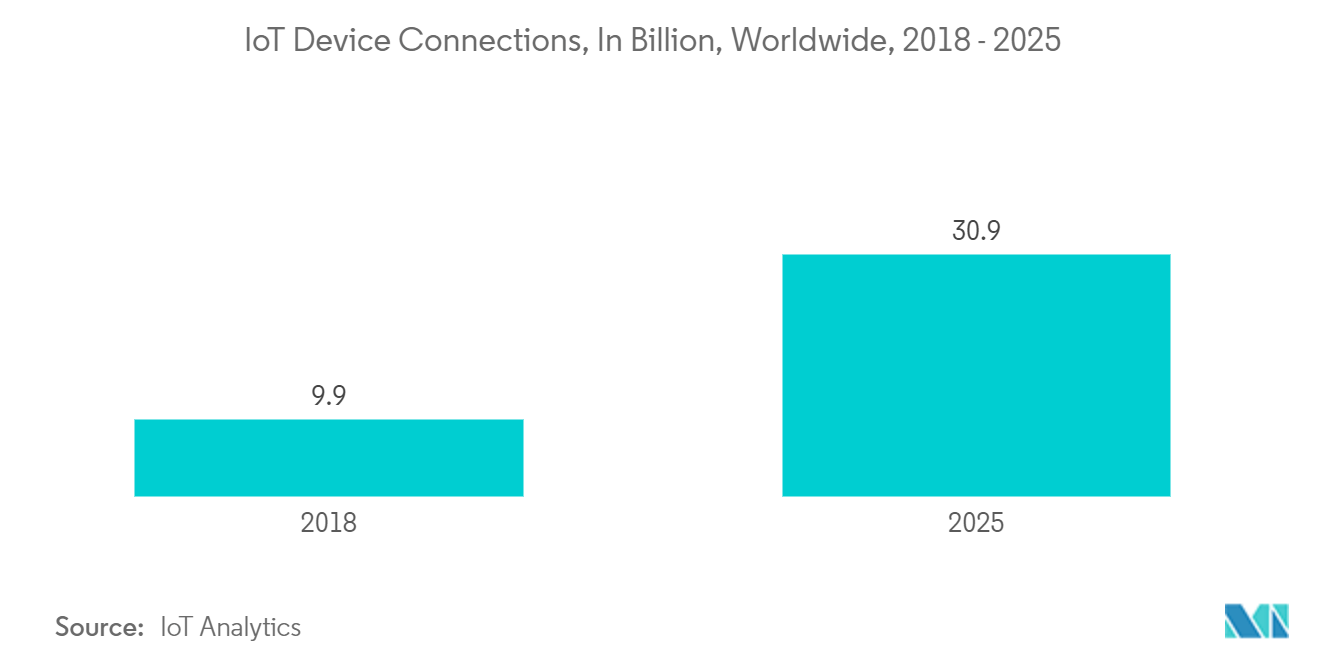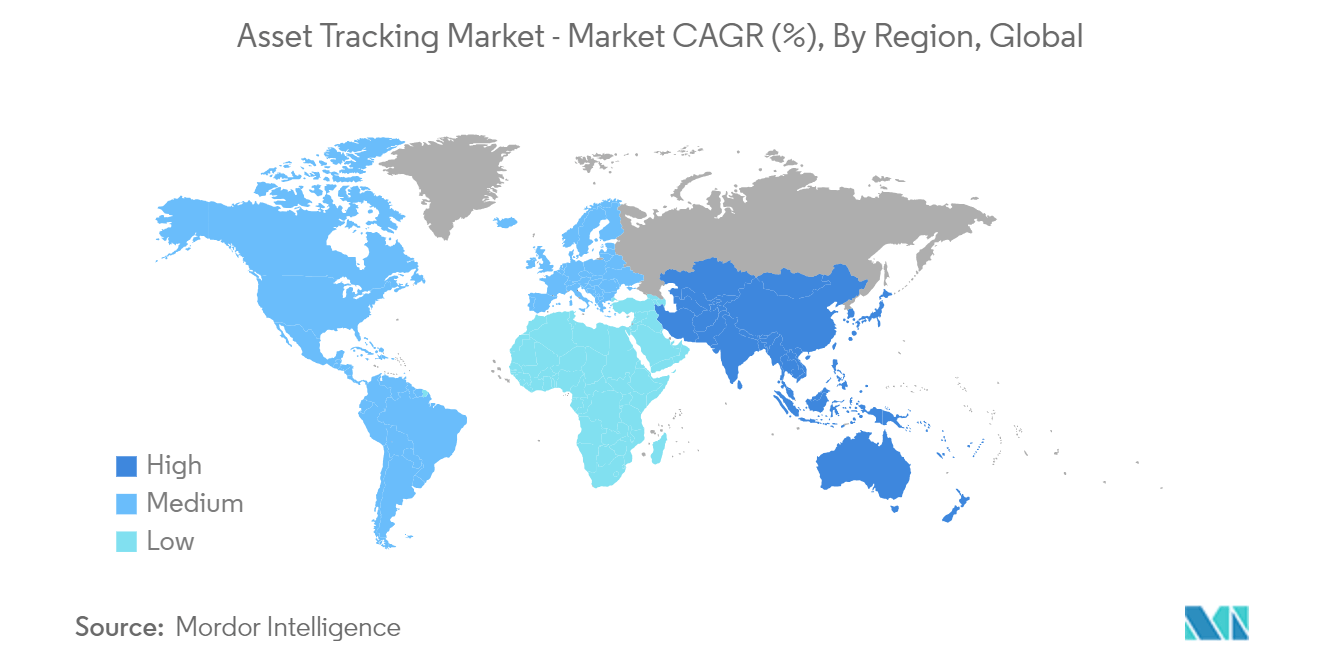Market Trends of Asset Tracking Industry
Manufacturing to be the Largest End-user Industry
- With the growing popularity of Industry 4.0 and smart factories, it has become necessary for industries in the manufacturing sector to adopt advanced digital technologies to improve manufacturing processes. Asset tracking is currently widely adopted by industries for tracking and monitoring asset location and status.
- In manufacturing facilities, asset monitoring technologies are widely used to monitor the movement and storage of raw materials, work-in-progress, and finished goods. The supply chain's operations are streamlined, and stockouts are minimized due to real-time tracking data.
- Advanced asset tracking technology, such as IoT and Bluetooth Low Energy (BLE), is rapidly gaining traction in the manufacturing industry. BLE tags come in many sizes, shapes, and capabilities, making it easy for manufacturers to tackle that first use case. Whether parts or equipment, asset tracking incorporates Internet of Things (IoT) advancements with thin tags that may be automatically tracked throughout the factory or yard. Such advanced asset-tracking solutions with IoT are expected to enrich the asset-tracking solutions in the manufacturing sector, thus increasing the market's growth.
- The need to monitor multiple plant locations simultaneously to get real-time information about the process, operations, and inventory is expected to boost the growth of asset tracking in the manufacturing industry. Innovative asset-tracking solutions with IoT and Industrial IoT are anticipated to enrich the asset-tracking solutions. The growing IoT connectivity is leading to increasing demand for IoT asset-tracking devices.
- For instance, according to the data from IoT analytics, 2018, there were 9.9 billion active IoT device connections worldwide, projected to amount to 30.9 billion units by 2025. These devices play a crucial role in monitoring, locating, and managing assets remotely, which can enhance efficiency, improve security, and optimize utilization across various industries. The expanding IoT ecosystem is driving the adoption of such tracking devices to better manage and monitor assets in real time.
- The growing shift toward smart factories, Industry 4.0, and digitization of the manufacturing sector is providing a promising future for the market's growth during the forecast period.

North America Holds Largest Market Share
- North America is expected to account for a significant market share of the asset tracking market, owing to the high adoption rate of advanced technologies in countries across the United States and Canada.
- Canada and the United States have recently suffered similar supply chain logistics challenges, such as road and rail bottlenecks near borders and key ports. The necessity of redundancy and planning has been underscored by significant weather disasters, worker shortages, security interruptions, and work stoppages due to material scarcity. In June 2021, the White House announced the formation of the Supply Chain Disruptions Task Force, which has started a pilot to improve digital information exchange between private businesses operating logistics supply chains to address these concerns for the United States.
- The significant growth in the food and beverage sector in the United States and Canada, alongside the adoption of advanced technologies, contributes to the market's growth rate. The food and beverage sector is vital to the US economy. The industry accounts for around 5% of the nation's GDP and 10% of employment, including agriculture, manufacturing, retail, and food service. The US Committee for Economic Development reports that the food and beverage sector includes nearly 27,000 businesses and employs around 1.5 million people.
- Canada is also setting up its independent Supply Chains Task Force to confer with business leaders, employees, and industry experts to develop recommendations for both immediate and long-term solutions to logistical supply chain issues. Their shared determination to address supply chain logistics issues supports a long-standing cooperative agreement between Canada and the United States in transport logistics. This partnership ranges from joint management of the Great Lakes St. Lawrence Seaway System to implementing Intelligent Transportation Systems, which allows commercial vehicles access to real-time border delay information.
- As the healthcare sector in the region is also witnessing incremental growth, the key players are innovating asset-tacking solutions in the segment. For instance, in April 2023, GE announced the launch of ReadySee, an asset management and network supervision solution, and Portrait Mobile, a monitoring service. To protect sensitive patient health information (PHI), ReadySee transforms data into actionable insights about devices and infrastructure, eliminates manual efforts to locate such devices, and self-manages cybersecurity protocols. For their clinical teams to be prepared to care for their patients, ReadySee assists biomedical and IT healthcare professionals in ensuring their equipment is up and running.
- These strategic collaborations and product launches are aimed at providing the various industries such as logistics, manufacturing, food, beverage, and others with solutions meeting the current demand and technologies, boosting the adoption rate, consequently resulting in growth rate in the region.

